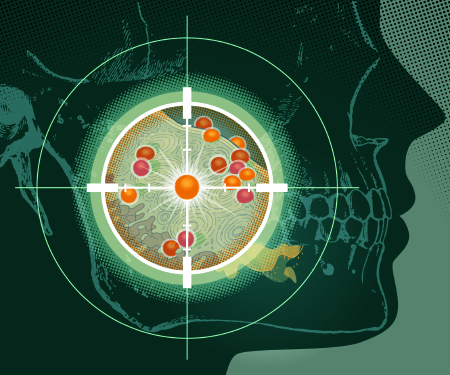Sedghizadeh receives $1.5 million for bone infection treatment

Posted
05 Sep 17
With help from the National Institutes of Health grant, the associate professor and his team aim to get FDA approval and bring the drug to market.
The novel treatment, featured earlier this year in the Journal of Medicinal Chemistry, pairs compounds from an antibiotic with those from a bisphosphonate (osteoporosis-treating medications) to target and deliver bacteria-killing medicine directly to the site of a bone infection.
Course after course of antibiotics
Currently, the main obstacle to treating bone-based bacterial infections (osteomyelitis) is that antibiotics do not enter bone — at least not at a high enough concentration to kill bacteria effectively. Instead, most antibiotics are released into the bloodstream, metabolized by the liver and then excreted.
To deliver a high enough concentration of antibiotics to be effective, patients must receive course after course of antibiotics, which can be quite expensive. It can also have potential side effects, including bacterial resistance and even, with enough exposure to antibiotics, patient toxicity.
In extreme cases, doctors may have to amputate bone tissue to extract the bacteria altogether before it consumes an entire bone, or, worse yet, the patient’s life.
An amazing homing drug
Sedghizadeh discovered a way to physiologically deliver the antibiotic and release it directly to the point of infection.
He worked with chemists to pair an antibiotic (ciprofloxacin) with a chemically inactive bisphosphonate (osteoporosis-treating medications) to create a compound that delivers the antibiotic right to the places it’s most needed.
“Bisphosphonates actually target sites of infection and inflammation in bone.” Sedghizadeh said. “They’re really amazing homing drugs.”
Initial results have been encouraging for Sedghizadeh.
“Just a single dose in vivo using this ‘targeting and release strategy’ killed 99 percent of bone-infecting bacteria and was an order of magnitude more deadly to the bacteria than ciprofloxacin alone, given in multiple doses,” he said.
What’s next?
With this NIH grant, Sedghizadeh plans to begin conducting larger animal in vivo studies and preparing data for eventual drug approval by the Food and Drug Administration.
“This grant means everything,” he said. “It allows further progress toward a commercial therapeutic that will impact human lives and reduce the morbidity and mortality associated with infectious bone disease.”
Sedghizadeh joined the Ostrow faculty in 2004. He is the director of the USC Center for Biofilms. His research subjects include biofilms, pathology, microbiology and infectious diseases.